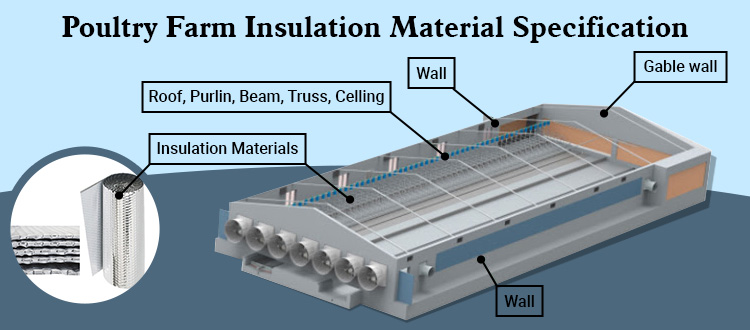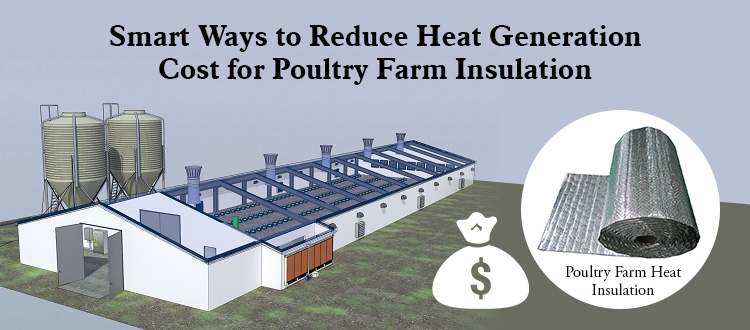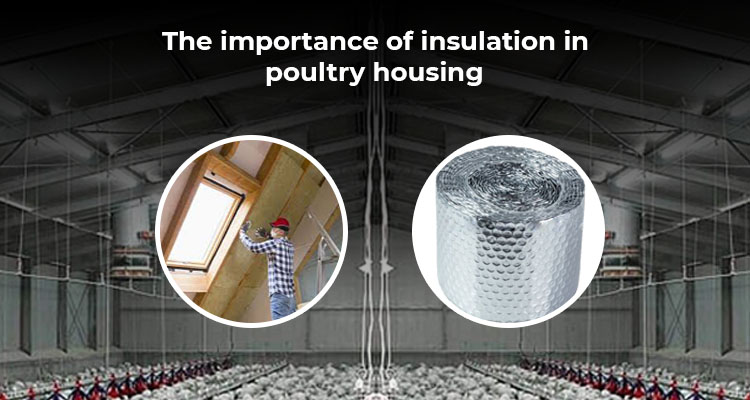The flock inside poultry needs a controlled temperature so that it can grow and breed properly. Thus, when winter hits, you have to invest a massive amount of money to keep your poultry warm. However, you can reduce the heating cost with a proper poultry farm insulation. A premium Poultry Farm Insulation Manufacturer will help you find the best insulation material for your farm. So, in this article, we are going to discuss the basic specifications of a poultry farm insulation material.
Primary reasons for Poultry farm insulation
Artificial heating includes the use of gases like propane, butane, etc. to generate heat. These gases are expensive, and their price keeps increasing every year. Moreover, these gases come with serious side effects. For instance, the flock might stop growing or have less food consumption due to the influence of these gases. So, a good breeder must focus on various ways to trap the natural heat instead of trying to produce artificial heat. Now, let us take a look at some of the best insulation materials from a premium Poultry Farm Insulation Manufacturer.
Specification of insulation material from a well maintained Poultry Farm Insulation Manufacturer
Neo insulated Sheets
Neo is one of the market leaders in Insulation services. It is an excellent insulation material as it contains double layers of fire-resistant polyurethane foam. Additionally, it has multiple layers of the waterproof coating so that it can tolerate rough weather. So, this material can prevent the downward heat flow and can control up to 97% of heat loss.
Benefits:
- It is capable of creating a natural environment within the room.
- This material can retain the natural temperature and reduce energy consumption. So, it is one of the best materials to reduce global warming.
- It isolates the room from all types of unwanted noise.
Neo Double heat Insulation material
It is an excellent insulation material due to its unique heat absorption system. Here, the manufacturer creates an air vacuum by putting several tiny air bubbles in between the two layers of aluminium foil. Thus, it can prevent all forms of heat transfer, and there is no loss of heat.
Benefits:
- The outer material is a reflective surface. Thus, it can keep your flock cool during the hot summer days.
- It can contain a lot of heat. Thus, you don’t need to waste hundreds of dollars on your heating costs.
Factory shades Insulation
As the name suggests, this material aims to implement the heavy-duty insulation process into a poultry farm. It is well-tested and uses the latest insulation technology. Additionally, it is a very affordable product, as it tries to aim towards the smaller poultry farms.
Benefits:
- It is a clean, thin, and single-layer insulation to avoid all forms of complexities.
- It provides an exceptional amount of safety, insulation, and environmental care.
- This material doesn’t require any form of maintenance.
- It is highly efficient and is very easy to install in all the poultry farms.
Neo Single Plus Insulation sheet
Neo is a very reputed Poultry Farm Insulation Manufacturer. This Thermo reflective material is an example of the massive evolution in the poultry farm insulation industry. The surface of this material can reflect the heat and spread it evenly throughout the room. Additionally, the outer surface can reflect the excess heat during the hot summer days to maintain a pleasant temperature inside the room.
Benefits:
- Maintains a clean and hygienic environment in the poultry farm.
- It is made of recyclable material. Thus, while using this material, you will produce no waste product that can harm the environment. So, you will be contributing towards making the earth healthier for the future generation.
Moisture resistant flexible Insulation material
Breeding involves keeping many chicks within a single area. So, when you have so many living things in a room, moisture contamination is a massive risk. So, Insulation Manufacturers created this brilliant material that completely abolishes this risk. Additionally, it is resistant to all forms of chemicals to prevent any contamination from the flock feeds. It is made from the finest material and has the best finished look.
Benefits:
- The reflective qualities of this material help it to survive the extreme weather conditions.
- This material is 100% recyclable. Thus, it puts no extra burden on the environment.
Conclusion
Poultry farm insulation is a very important process. It is necessary if you want to make a profit in this business. For example, you won’t make any profit if you waste thousands on heating the farm. So, we can conclude that you must get your farm insulated by a Poultry Farm Insulation Manufacturer. It will insulate your farm and create a naturally warm atmosphere inside it. This will not only help your flock to breed naturally but also help in saving a lot of money that you have been wasting on heating the farm artificially.



